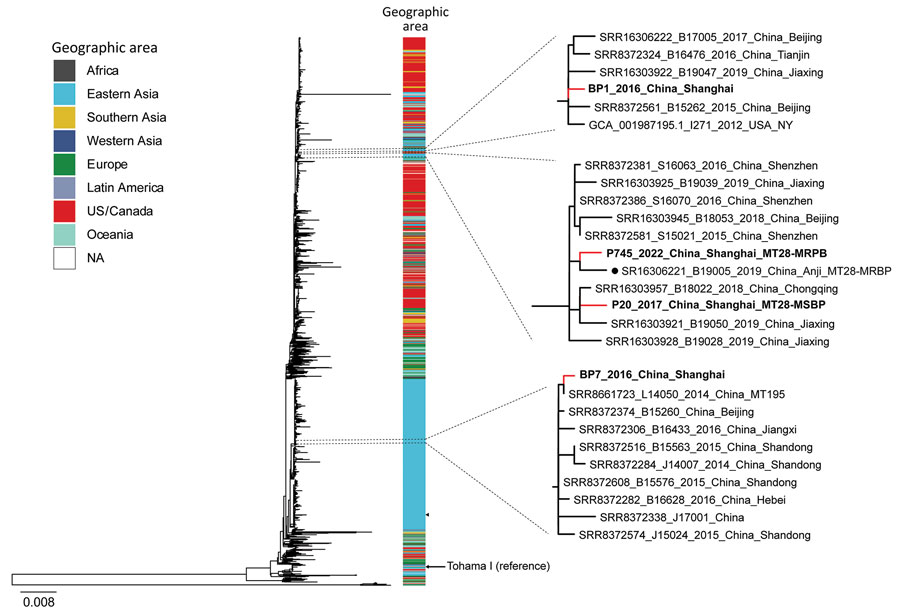Volume 30, Number 1—January 2024
Research
Molecular Evolution and Increasing Macrolide Resistance of Bordetella pertussis, Shanghai, China, 2016–2022
Figure 5

Figure 5. Maximum-likelihood phylogenetic tree of 4 Shanghai, China, and 1,491 global Bordetella pertussis strains, by geographic area, 2016–2022. Red lines indicate Shanghai strains; bold indicates 2 MT28 strains. Black dot indicates MT28-MRBP (B19005) strain from Anhui Province, China. Arrow indicates reference strain Tohama I. Shanghai strains associated phylogenetic subclades are enlarged for visualization. MSBP, macrolide-sensitive Bordetella pertussis; MT, multilocus variable-number tandem-repeat analysis type; NA, not applicable.
1These first authors contributed equally to this article.
Page created: November 19, 2023
Page updated: December 20, 2023
Page reviewed: December 20, 2023
The conclusions, findings, and opinions expressed by authors contributing to this journal do not necessarily reflect the official position of the U.S. Department of Health and Human Services, the Public Health Service, the Centers for Disease Control and Prevention, or the authors' affiliated institutions. Use of trade names is for identification only and does not imply endorsement by any of the groups named above.